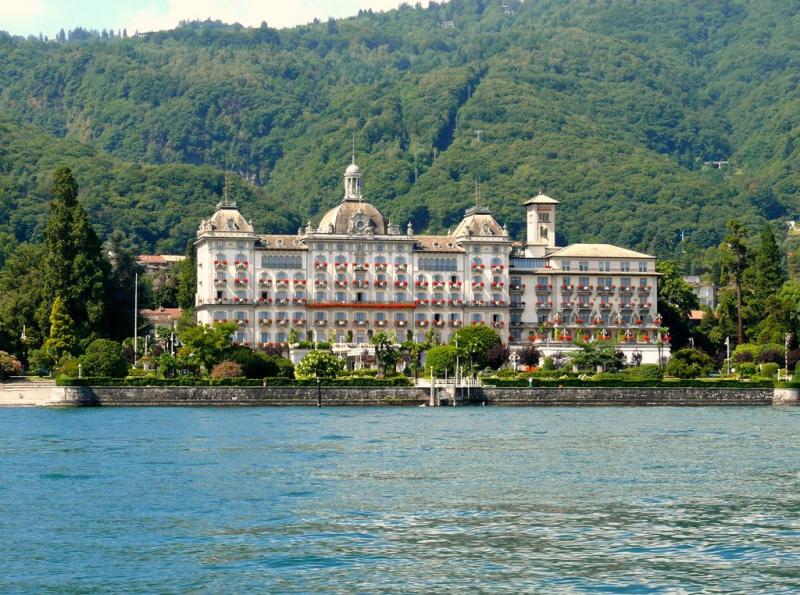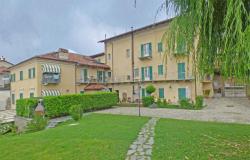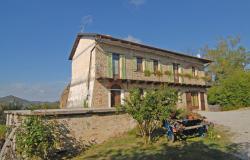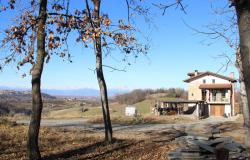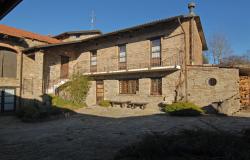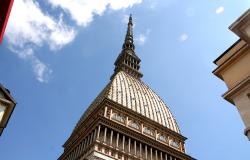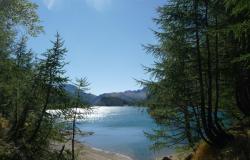In the summer of 2012, American Publishing giants Scribner released a revised version of Ernest Hemingway’s classic novel, A Farewell to Arms. The new edition includes not only the original artwork, but also 47 alternative endings that give new insight to this First World War masterpiece. On its original publication, in 1928, A Farewell to Arms reached the bestseller list and cemented Hemingway’s reputation as a literary heavyweight.
 Although Hemingway is most commonly associated with Florida’s Key West, Spain and Cuba, the latter serving as inspiration for his Nobel Prize Winning novella The Old Man and the Sea, Hemingway also had a long, and sometimes painful, relationship with Italy. In 1918, as war raged in Europe, an 18 year old Ernest Hemingway responded to a plea for ambulance drivers on the Italian front, and left for Europe. He arrived in Milan and immediately received a baptism of fire when he was sent to the scene of a bombed munitions factory to collect "the fragments" of female workers. A scene he vividly described years later in his book Death in the Afternoon.
Although Hemingway is most commonly associated with Florida’s Key West, Spain and Cuba, the latter serving as inspiration for his Nobel Prize Winning novella The Old Man and the Sea, Hemingway also had a long, and sometimes painful, relationship with Italy. In 1918, as war raged in Europe, an 18 year old Ernest Hemingway responded to a plea for ambulance drivers on the Italian front, and left for Europe. He arrived in Milan and immediately received a baptism of fire when he was sent to the scene of a bombed munitions factory to collect "the fragments" of female workers. A scene he vividly described years later in his book Death in the Afternoon.
Fossalta di Piave on the Italian Front
A few days later he was transferred to Fossalta di Piave on the Italian Front. The Italian Front stretched from more than 400 miles, with much of the fighting being conducted in or around the Alps, with the Italians on one side and the Austro-Hungarian armies on the other. The Italian Front could be every bit as deadly a killing field as the Somme or Passchendaele on the Western Front, with some 650,000 casualties inflicted on the Italian Army alone. Soldiers fought against the enemy but also against the hostile weather that could reach as low as -45c during the winter months. In those freezing conditions, a single mortar round could inflict casualties as far as one mile away, as the shards of ice cut through the air like daggers. Avalanches were also a constant fear and often intentionally caused by opposing Armies. One such avalanche in 1916 killed more than 10,000 Austrian troops near Cortina d’Ampezzo in Northern Italy. It would later become known as White Friday. The "war in the mountains" would rage for almost three and a half years until French, British and American soldiers could reinforce the Italians. After the decisive battle of Vittorio Veneto the Austro-Hungarian Empire collapsed and an Armistice was signed.

Italian Silver Medal of Bravery
Several months earlier on 8th July 1918 Ernest Hemingway was seriously wounded,while delivering cigarettes and chocolates to front line troops, when a mortar exploded next to him. Despite the severity of his own wounds, Hemingway still managed to carry an Italian soldier to safety, for which he received the Italian Silver Medal of Bravery. He spent the next six months recovering from the 227 shrapnel wounds to his legs in a Milan hospital. During this time Hemingway fell in love with Nurse Agnes von Kurowsky, who he fictionalised as Nurse Catherine Barkley in A Farewell to Arms.
A Farewell to Arms
Although the novel is a work of fiction, the parallels between the young protagonist, Frederick Henry, and Hemingway's own life are clear. And this perhaps is what gives it such a quality of authenticity: from the description of the battle of Caporetto, to the relationship between Henry and Catherine, and the novels final heart-wrenching climax. Hemingway speaks to the reader with conviction and, sometimes, brutal honesty. His “to the point” style is as much about what is not written as what is, and this shift in style, away from the overly flowery language of his peers, allows the reader to “fill the gaps", and almost become part of the story.

Stresa, Lake Maggiore
Lake Maggiore, his “home from home"!
In September 1918, just two month after his injury, a 19 year old Ernest Hemingway was given 10 day Convalesce-Pass and headed for Stresa, just an hour drive from Milan on Lake Maggiore. He checked into room 106 (now the Hemingway Suite) at the Grand Hotel Des Iles Borromees, and headed straight for the bar. Unfortunately, for visitors looking for a "Hemingway experience" that bar has long since been closed; the good news is that the new bar has not forgotten Him. Several photos of him adorn the wall, and a Hemingway Special cocktail can still be found on the drinks menu. But surely, it’s the framed page of the guest book he signed on a return visit in 1948 that is the most intriguing. It simply reads: "Ernest Hemingway (an old client)".
Hemingway spent 7 of his 10 day leave at the Grand Hotel Iles Borromées. While there he spent much of his time playing pool with a "99 year old count", talking with the barman over a dry martini (Hemingway's drink of choice back then) and taking boating trips to the small island of Pescatori on Lake Maggiore. All of which were fictionalised in A Farewell to Arms.

Grand Hotel Des Iles Borromees Stresa
It's a strange feeling to sit at the bar in the Hotel Borremées, looking out across the lake and knowing that somewhere in that still water, or in the mountains behind, Hemingway found his inspiration. In a letter to his parents in 1918, Hemingway wrote "I'm up here in Stresa, a little resort on Lake Maggiore. One of the most beautiful Italian lakes.".
So it seems not much has changed since Hemingway’s time, it is still just as beautiful and still remains a perfect location to relax and enjoy the fresh air of the lakes. The many tiny islands on Lake Maggiore offer some of the most beautiful gardens in Europe and can easily be reached in a matter of minutes by the excellent passenger boats that operate throughout the day.

Hemingway Suite - Grand Hotel Des Iles Borromees Stresa
Alternatively, the Lake Maggiore Express train takes you along a scenic coastal route that ventures right into the heart of the Swiss Alps and back in time for a Dry Martini. For a more sober experience, it is worth visiting the Stresa War Museum that has many artefacts relating to the "war in the mountains" and also a poem written by Hemingway to honour the fallen. Hemingway visited Stresa several times during his lifetime and often referred to it as his “home from home."
 Hemingway's spares writing style and universal themes never failed to captivate the reader. He wrote with an honesty that was sometimes painful to read, but always impossible not to. He pulled no punches and made no apologies for it. Snippets of his own life were so delicately inserted into his novels that it is only in hindsight that we can fully understand what he meant when he described the process of writing as “bleeding into a typewriter.” Unfortunately, the legend that Hemingway himself had helped to create has often threatened to overshadow the great contribution he made to modern literature. By his final years his novels and real life had become so intertwined that even he couldn’t tell them apart.
Hemingway's spares writing style and universal themes never failed to captivate the reader. He wrote with an honesty that was sometimes painful to read, but always impossible not to. He pulled no punches and made no apologies for it. Snippets of his own life were so delicately inserted into his novels that it is only in hindsight that we can fully understand what he meant when he described the process of writing as “bleeding into a typewriter.” Unfortunately, the legend that Hemingway himself had helped to create has often threatened to overshadow the great contribution he made to modern literature. By his final years his novels and real life had become so intertwined that even he couldn’t tell them apart.
Ernest Hemingway took his own life with a shotgun in 1961, aged 61.
